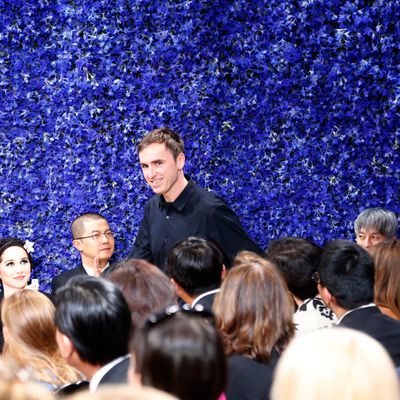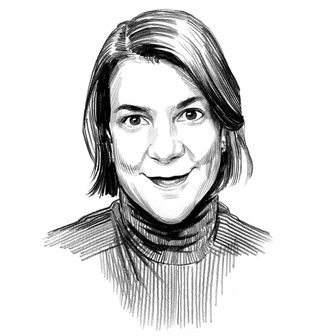
Raf Simons’s first collection at Dior was unanimously adored by critics, who fawned over Simons’s ability to marry the fashion house’s early aesthetic with his own modern vision. But yesterday, storied British fashion journalist Colin McDowell came forward with some qualms about the show — namely, that he felt all the pomp and circumstance was overdone.
He wrote in his column for Business of Fashion:
But now we face a brave new world with Raf Simons at the helm. He is a bold and inspired choice by the Dior executives. He has a good track record and will soon have a worldwide profile. But not quite yet. And I think that the Dior executives are aware of this, which is why, for his first Dior outing, the show space was overwhelmed with an exceedingly ostentatious display of flowers that literally covered the walls of the venue. What’s more, an unusually large number of designers — Marc Jacobs, Alber Elbaz, Donatella Versace, Christopher Kane, Pierre Cardin, Diane von Furstenberg, Riccardo Tisci, Olivier Theyskens and Azzedine Alaïa — had been called in to fill the front rows.
But the over the top choreography was unnecessary. Raf Simons is a very good designer and Dior should have the confidence to stand by him without cheerleaders or fancy frills. They were part of the Galliano era, but that is gone and they have no place in Dior by Raf Simons.
There’s one hole in this criticism — those front rows would still have been plenty full of A-list fashion types and celebrities if all those designers hadn’t “been called in”; it’s not like Dior needed seat-fillers. And having designers there instead of movie stars was a nice move on Dior’s part, as it showed industry solidarity instead of a need for Hollywood-level publicity. One also got the sense that so many designers were invited because the show signaled a new chapter in the international fashion industry, as it finally laid to rest the aftermath of Galliano’s transgressions. Rather than wondering how Dior will proceed without Galliano, we now wonder how Dior will proceed with Simons. It was an immensely positive moment, and it’s understandable that lots of designers were eager to witness it.
McDowell, of course, is still in Simons’s corner, and concludes his column with a “go forth, young man” pep talk that urges Simons not to borrow from Dior’s archives too reverently (if at all):
[Simons] is in the unique position of being able to finally modernise couture and break out of the endlessly atavistic circles it has spun for so long.
But he will not do so if he spends his time simply giving his own spin to the thinking of Christian Dior and John Galliano. He must look into his heart and mind, remember what makes him unique and forget all about the Dior archive. It has been endlessly examined and re-examined and generally done to death already. Raf Simons has a strongly individual aesthetic. He has no need to lean on the past.
He is not son of John Galliano. He is Raf Simons, future leader of the pack.
Simons should tape that last sentence on his bedroom mirror, or at least on his kitchen fridge.





